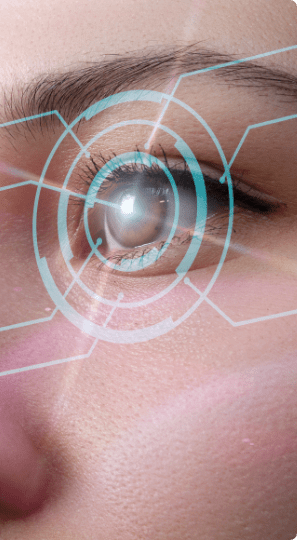New CPT Code for OCT Angiography (OCT-A): Everything You Need to Know About 92137
Have questions about the new CPT Code 92137 for OCT Angiography?
We’ve got you covered with answers to all the most important questions.
Discover how OCT-A can unlock higher reimbursements for your practice while elevating your patient care.

A new CPT code has taken effect in 2025 for the use of optical coherence tomography angiography (OCT-A) in clinical practice. Here’s what eye care professionals need to know about CPT code 92137.
What is the code?
The CPT code is 92137.
When did it take effect?
It took effect on January 1, 2025.
What does it include?
92137 describes diagnostic retinal imaging, special optical coherence tomography (OCT) and OCT angiography (OCT-A).
What does it require?
OCT-A must be performed and interpreted on the same day.
What diagnostic codes support 92137?
The same ICD-10-CM codes for 92134 can be used for 92137.
What are the restrictions on its use?
92137 cannot be billed with 92133 (OCT of the posterior segment) or 92134 (OCT of retina) - when performed at the same patient encounter.
92137 may be billed in combination with 92235 – Fluorescein angiography (FA), 92240 – Indocyanine-green (ICG) angiography, or 92242 - Combined FA / ICG angiography.
What is the average reimbursement?
The average reimbursement for OCT-A, 92137, is $56.93. Standard OCT, 92134, provides an average reimbursement of $31.38. Fees for 2025 were reduced about 22% from 2024 [See Figure 1].
.png?width=729&height=183&name=Screenshot%20(120).png) FIGURE 1. A chart showing the average national reimbursements for OCT, OCT-A, and FA for the years 2023, 2024, and 2025.
FIGURE 1. A chart showing the average national reimbursements for OCT, OCT-A, and FA for the years 2023, 2024, and 2025.
.png?width=729&height=164&name=Screenshot%20(119).png) FIGURE 2. A chart showing the annual revenue difference for OCT (92134) vs. OCT-A (92137) based on 20 procedures per week.
FIGURE 2. A chart showing the annual revenue difference for OCT (92134) vs. OCT-A (92137) based on 20 procedures per week.
OPTOVUE SOLIX BY VISIONIX
- The ONLY OCT with FDA-cleared OCT-A metrics
 FullRange® Retinal 16x6.25mm scan
FullRange® Retinal 16x6.25mm scan- FullRange® Anterior Chamber 18x6.25mm scan
- Ultra-fast 120kHz scan speed
- Higher scan density & precision vs. other OCTs/OCT-As
- Integrated fundus camera
- External color & IR imaging
- New optional Topography Module available!
References
- Repka MX, Woodke J. New for 2025—CPT Codes 92137 for OCTA and 66683 for Iris Prosthesis Implantation. American Academy of Ophthalmology. Accessed December 17, 2024. https://www.aao.org/eyenet/article/92137-octa-66683-iris-prosthesis
- American Academy of Ophthalmology. 2025 Coding Update. October 18, 2024. Accessed December 17, 2024. https://www.aao.org/eyenet/academy-live/detail/2025-Coding-Update
- American Optometric Association. 2025 code changes: What doctors of optometry need to know. November 13, 2024. Accessed December 17, 2024.https://www.aoa.org/news/practice-management/billing-and-coding/2025-code-changes-what-doctors-of-optometry-need-to-know?sso=y
- Johnson MP. Coding: Billing for Ophthalmic Diagnostic Tests. October 1, 2024. Accessed December 17, 2024. https://www.ophthalmicprofessional.com/issues/2024/october/coding/
- Centers for Medicare and Medicaid Services. Annual Update to the List of CPT/HCPCS Codes Effective January 1, 2025. Accessed December 17, 2024. https://www.cms.gov/files/document/annual-update-list-cpt/hcpcs-codes-effective-january-1-2025.pdf
- Centers for Medicare and Medicaid Services. Search the Physician Fee Schedule. January 1, 2025. Accessed March 27, 2025. https://www.cms.gov/medicare/physician-fee-schedule/search
- Centers for Medicare and Medicaid Services. Billing and Coding: Scanning Computerized Ophthalmic Diagnostic Imaging. January 1, 2025. https://www.cms.gov/medicare-coverage-database/view/article.aspx?articleId=57600
Provided by ODwire.org using public sources (see references). Consult relevant laws, regulations, and payer guidance. Not an official or complete reimbursement source. April 2025.
**The information provided is for general informational purposes only. It is not intended to replace and should not be considered a substitute for professional medical advice, diagnosis, or treatment. The content is not designed to replace the relationship between a patient and their healthcare provider. Any medical decision should be made in consultation with a qualified healthcare professional who can provide information tailored to your individual situation. Medical procedures, case studies, and practices mentioned in this content may vary depending on regional standards, local regulations, and the discretion of the healthcare provider. What may be considered appropriate and ethical in one country may differ in another. The content may include general references to medical practices, medications, or treatments that are widely accepted in certain regions but may not be universally applicable or approved. It is important to consult a healthcare professional in your jurisdiction to ensure that the information is relevant to your specific situation. The authors, editors, and contributors of this content disclaim any liability for any adverse effects resulting directly or indirectly from the information contained herein. Readers should exercise their own judgment and seek advice from healthcare professionals when necessary. By accessing and using this content, you acknowledge and accept the terms of this disclaimer.
